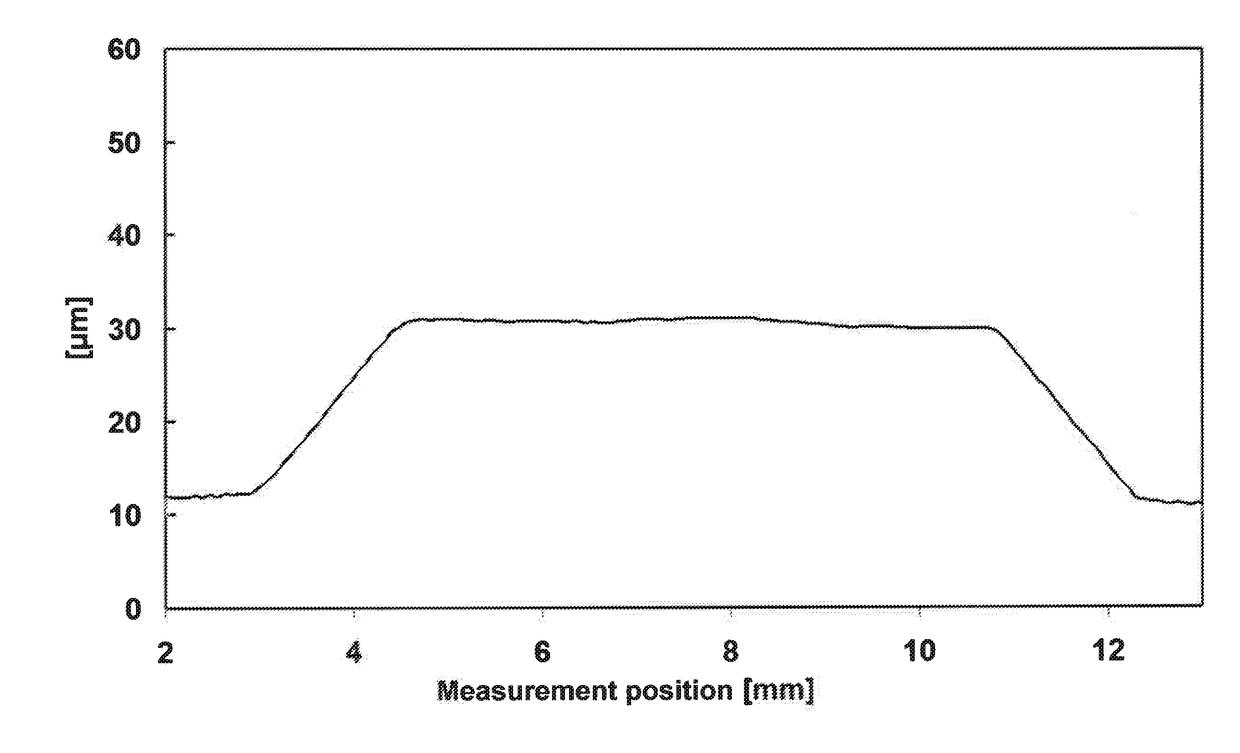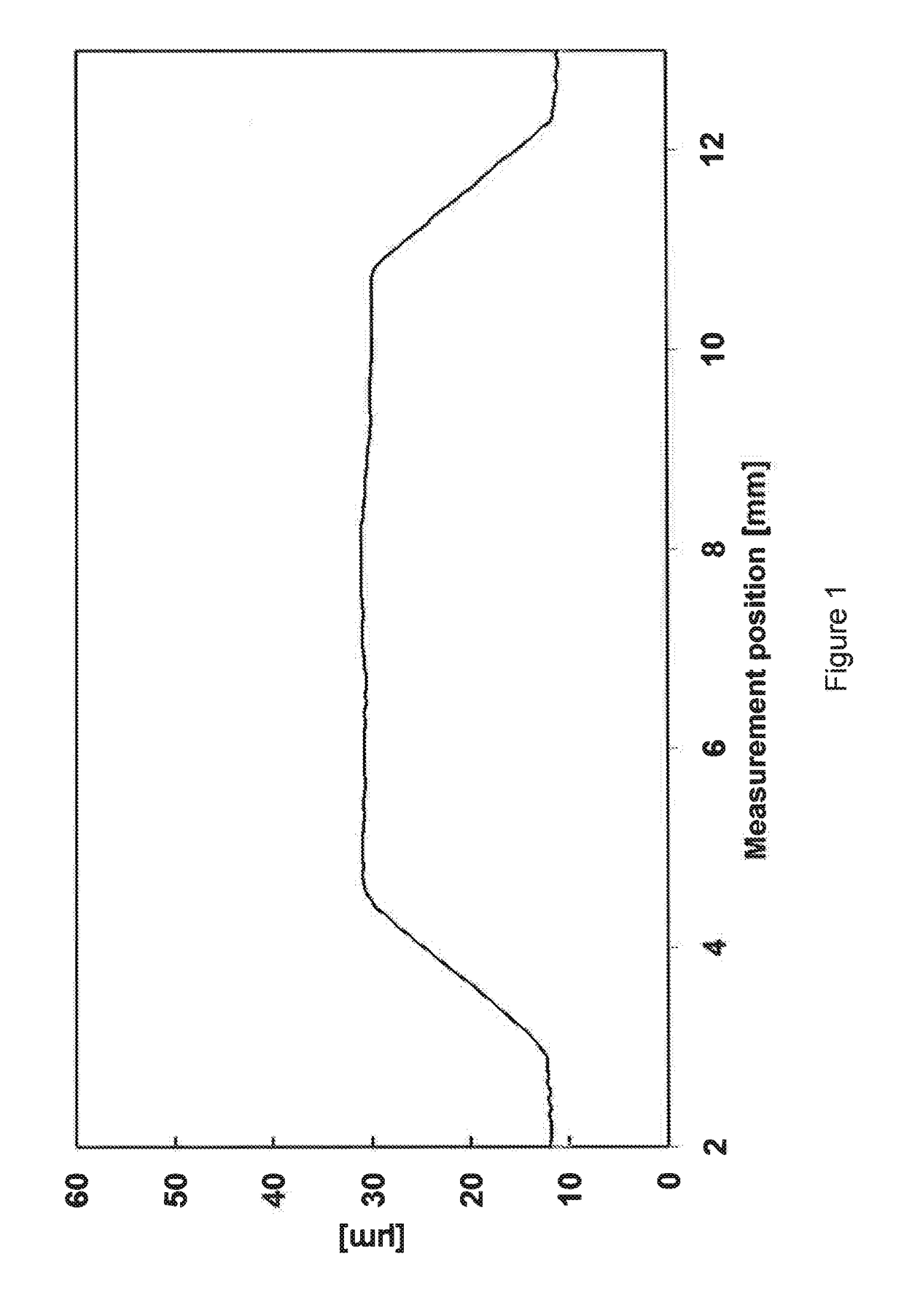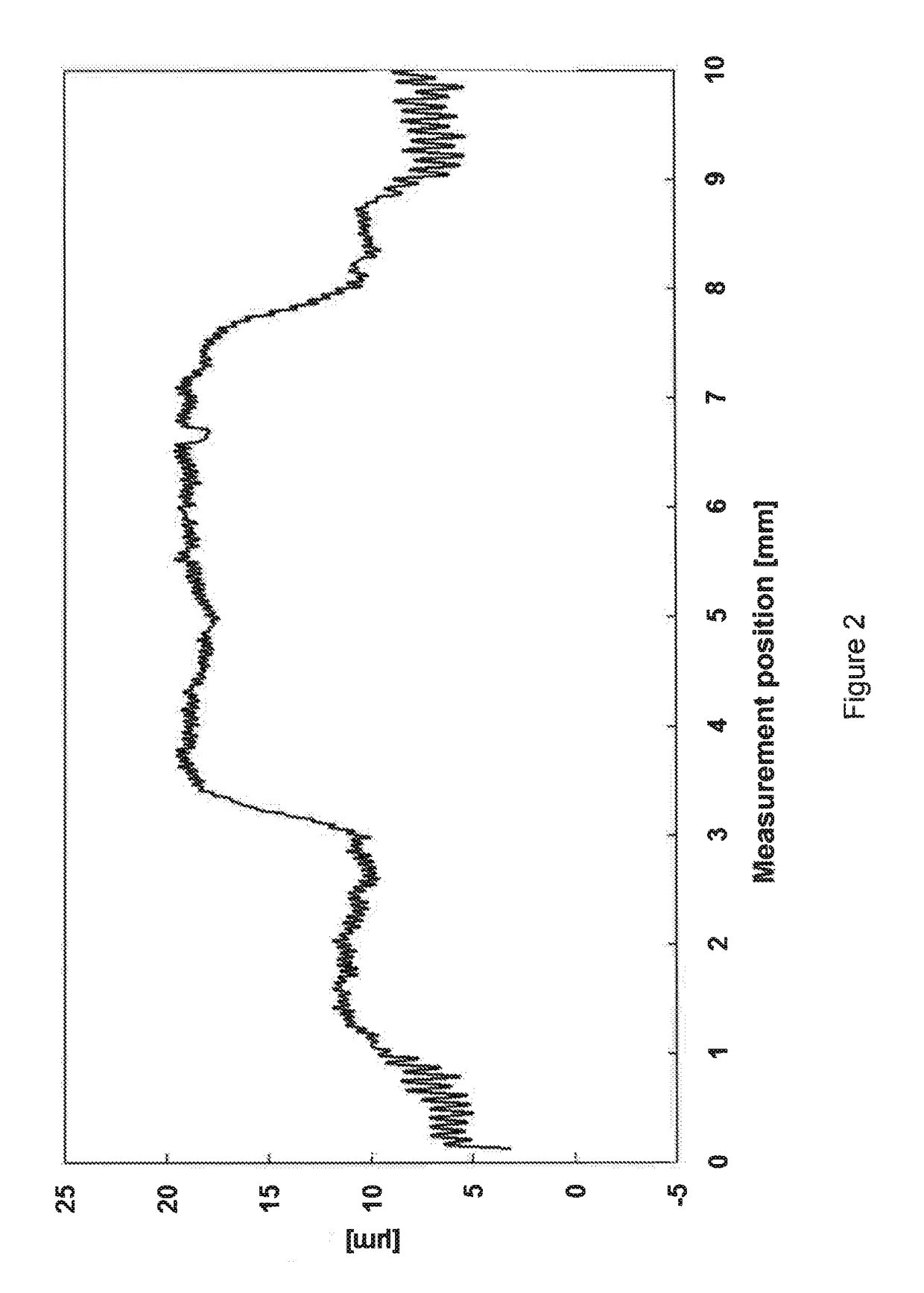Method for the additive production of relief printing plates
a technology of relief printing plate and additive production, which is applied in the direction of microlithography exposure apparatus, photomechanical treatment, instruments, etc., can solve the problems of complex process, unirradiated regions of flexographic printing plate becoming tacky, and crosslinked regions of flexographic printing plate also undergoing swelling
- Summary
- Abstract
- Description
- Claims
- Application Information
AI Technical Summary
Benefits of technology
Problems solved by technology
Method used
Image
Examples
experiment 1
[0104
[0105]Holes measuring 1 mm, 3 mm and 10 mm were punched into an aluminum sheet of thickness about 0.5 mm to produce a template. This template was placed onto the SIS-based carrier layer (table 1) and loaded with weights at the edges in order to ensure intimate contact between mask and surface of the polymeric carrier layer.
[0106]The holes in the template were filled with HDA2 at room temperature (22° C.). After a diffusion time of 60 minutes, the template was removed from the carrier layer. Excess monomer was removed by washing with isopropanol, and the relief plate was blow-dried with compressed air. The relief was then fixed by irradiation with UVA light (10 minutes, nyloflex F III lamp), and the surface was detackified by means of UVC irradiation (3 minutes, nyloflex F III lamp). A Perthometer was used to measure the resultant relief (see FIGS. 4, 5 and 6).
[0107]The built-up spots had steep sides. The spot surfaces were level and uniform. The relief heights determined were 4...
experiment 2
[0108
[0109]Experiment 1 was repeated, except that the temperature for diffusion of the monomer into the material was set to 40° C.
[0110]Again, the built-up spots had steep sides and a level, uniform surface. Relief height was greater because of the higher diffusion velocity. The relief heights were 108 μm (10 mm spot), 106 μm (3 mm spot) and 108 μm (1 mm spot).
[0111]A compressible adhesive tape was then used to bond the relief printing plate to the cylinder of a flexographic printing machine, and alcohol-based ink was used for printing. Table 3 collates the printing parameters.
TABLE 3Printing machineF&K FP 6S / 8SubstratePE sheetPrinting inkSiegwerk NC4012 cyanViscosity of printing ink22 secAnilox roll460 l / cm, 3.5 g / cm3Adhesive tapeLohmann 5.3Print velocity80 m / minPrint setting+30 μm in relation to kiss print
[0112]Printout of all of the relief spots was uniform with the print setting selected. Each printed spot exhibited full coverage and no excessive squeeze edge. The diameters of t...
PUM
| Property | Measurement | Unit |
|---|---|---|
| diffusion velocity | aaaaa | aaaaa |
| temperature | aaaaa | aaaaa |
| relief depth | aaaaa | aaaaa |
Abstract
Description
Claims
Application Information
 Login to View More
Login to View More - R&D
- Intellectual Property
- Life Sciences
- Materials
- Tech Scout
- Unparalleled Data Quality
- Higher Quality Content
- 60% Fewer Hallucinations
Browse by: Latest US Patents, China's latest patents, Technical Efficacy Thesaurus, Application Domain, Technology Topic, Popular Technical Reports.
© 2025 PatSnap. All rights reserved.Legal|Privacy policy|Modern Slavery Act Transparency Statement|Sitemap|About US| Contact US: help@patsnap.com



